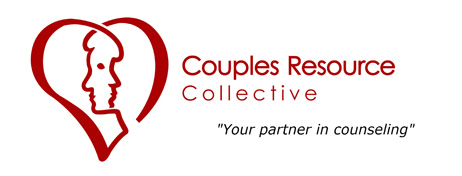Child Abuse and Neglect
Approximately 3 million cases of child abuse and neglect involving almost 5.5 million children are reported each year. The majority of cases reported to Child Protective Services involve neglect, followed by physical and sexual abuse. There is considerable overlap among children who are abused, with many suffering a combination of physical abuse, sexual abuse, and/or neglect.
Sexual abuse is any sexual activity that a child cannot understand or consent to. It includes acts such as fondling, oral-genital contact, and genital and anal intercourse. It also includes exhibitionism, voyeurism, and exposure to pornography. Studies have suggested that up to one in four girls and one in eight boys will be sexually abused before they are eighteen years old.
Physical abuse occurs when a child’s body is injured as a result of hitting, kicking, shaking, burning, or other show of force. One study suggests that about 1 in 20 children has been physically abused in their lifetime.
Risk Factors of Abuse and Neglect
Most child abuse occurs within the family. Risk factors include parental depression or other mental health issues, a parental history of childhood abuse, and domestic violence.
Child neglect and other forms of maltreatment are also more common in families living in poverty and among parents who are teenagers or who abuse drugs or alcohol. More children are abused by a caregiver or someone they know, than abused outside of the home by a stranger.
Child neglect can include physical neglect (failing to provide food, clothing, shelter, or other physical necessities), emotional neglect (failing to provide love, comfort, or affection), or medical neglect (failing to provide needed medical care). Psychological or emotional abuse results from all of the above, but also can be associated with verbal abuse, which can harm a child’s self-worth or emotional well-being.
Signs and Symptoms
It is not always easy to recognize when a child has been abused. Children who have been maltreated are often afraid to tell anyone, because they think they will be blamed or that no one will believe them. Sometimes they remain quiet because the person who abused them is someone they love very much, or because of fear, or both.
Parents also tend to overlook signs and symptoms of abuse, because they don’t want to face the truth. This is a serious mistake. A child who has been abused needs special support and treatment as early as possible. The longer he continues to be abused or is left to deal with the situation on his own, the harder it is for children to be able to heal and develop optimally physically and mentally.
There are no behaviors that relate to a particular type of child abuse or neglect. Here is a short list of physical signs and behavioral changes in children who may have experienced abuse or neglect:
Physical Signs
- Any injury (bruise, burn, fracture, abdominal or head injury) that cannot be explained
- Failure to gain weight (especially in infants) or sudden dramatic weight gain
- Genital pain or bleeding
- A sexually transmitted disease
Other Changes that Should Raise Concern:
- Fearful behavior (nightmares, depression, unusual fears)
- Abdominal pain, bed-wetting (especially if the child has already been toilet trained)
- Attempts to run away
- Extreme sexual behavior that seems inappropriate for the child’s age
- Sudden change in self-confidence
- Headaches or stomachaches with no medical cause
- Abnormal fears, increased nightmares
- School failure
- Extremely passive or aggressive behavior
- Desperately affectionate behavior or social withdrawal
- Big appetite and stealing food
Long-Term Consequences
In most cases, children who are abused or neglected suffer greater mental health than physical health damage. Emotional and psychological abuse and neglect deny the child the tools needed to cope with stress, and to learn new skills to become resilient, strong, and successful. So a child who is maltreated or neglected may have a wide range of reactions and may even become depressed or develop suicidal, withdrawn, or violent behavior. As he gets older, he may use drugs or alcohol, try to run away, refuse discipline, or abuse others. As an adult, he may develop marital and sexual difficulties, depression, or suicidal behavior.
Not all children who are abused have severe reactions. Usually the younger the child, the longer the abuse continues, and the closer the child’s relationship with the abuser, the more serious the mental health effects will be. A close relationship with a very supportive adult can increase resiliency, reducing some of the impact.
Getting Help
If you suspect your child has been abused, get help immediately through your pediatrician or a local child protective agency. Physicians are legally obligated to report all suspected cases of abuse or neglect to state authorities. Your pediatrician also will detect and treat any medical injuries or conditions, recommend a therapist, and provide necessary information to investigators. The doctor also may testify in court if necessary to obtain legal protection for the child or criminal prosecution of the person suspected of perpetrating the abuse or neglect.
If your child has been abused, you may be the only person who can help him. There is no good reason to delay reporting your suspicions of abuse. Denying the problem will only make the situation worse, allowing the abuse or neglect to continue unchecked and decreasing your child’s chance for optimal physical and mental health and well-being.
In any case of abuse or neglect, the child’s safety is of primary concern. He needs to be in a safe environment free of the potential for continuing abuse and neglect.
Preventing Abuse and Neglect
The major reasons for physical and psychological maltreatment of children within the family often are parental feelings of isolation, stress, and frustration. Parents need support and as much information as possible in order to raise their children responsibly. They need to be taught how to cope with their own feelings of frustration and anger without venting them on children. They also need the companionship of other adults who will listen and help during times of crisis.
Personal supervision of and involvement in your child’s activities are the best ways to prevent physical and sexual abuse outside the home. Pay careful attention to your child’s reports about and reactions to his experiences at child care and school. Always investigate if your child tells you he’s been maltreated or if he undergoes a sudden unexplained change in behavior.
Although you don’t want to frighten your child, you can teach him some basic rules of safety in a non-threatening manner. Teach him to keep his distance from strangers, not to wander away from you in unfamiliar territory, to say “no” when someone asks him to do something against his will, and always to tell you if someone hurts him or makes him feel bad.
Remember
Open, two-way communication with your child provides the best chance that you will know early when a problem occurs. Emphasize that he will not get in trouble if he tells you about abuse or other confusing events. Emphasize that you need to know this to be able to keep him safe and that he will be OK if he tells you. Instead of teaching him that he’s surrounded by danger, teach him that he is strong, capable, and can count on you to keep him safe, as long as he can tell you about it.

